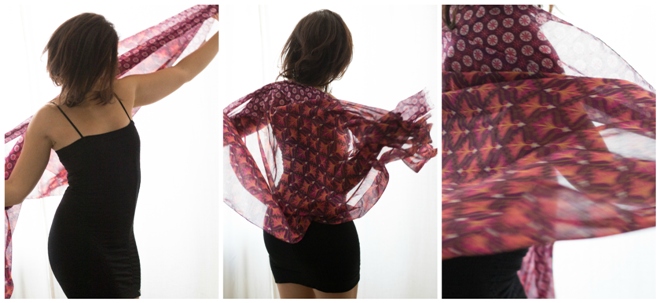
We’ve heard it over and over again—the laundry list of meditation benefits:
Stress relief, mental focus, stamina, happiness, better sex life, better health, better cognitive function, more empathy, more love, more bliss, more presence.
Whether it’s the latest study, the most recent fortune 500 CEO’s testimonial or our mother, everyone seems to be shouting it from the rooftops:
“Meditation is the answer.”
~
“My vagina’s holy grail, seriously.” Bid farewell to a weak pelvic floor with this award-winning, ingenious device + a free bag of craft Arabica coffee >>
~
But if you’re anything like me, you might occasionally wonder, “Why on earth does sitting down to meditate actually stress me out?!”
Many times I can’t sit still. My neck starts hurting and I can’t stop the million thoughts buzzing through my mind. And back when I started, I inevitably would walk away every so often thinking “Not my thing” or “I suck at this”.
Until I realized: We’ve all been trying a very specific form of meditation—a meditation form that came from the East to the West through male gurus, where the role of meditation is to transcend the physical to reach a level of peace, connection and spirituality. And it just happened to be the one that got trendy.
And although there is nothing wrong with that method, it’s just one philosophy and one way to reap the benefits of meditation.
There are many other traditions that believe that connection to the physical, instead of trying to transcend it, is in fact the key to spirituality, to stress relief and to happiness. And I realized that myself, and many of the women I work with in my coaching practice, felt the same way. We needed a different way to immerse, sink deeper and feel stillness.
I’m so passionate about this because our Western lifestyle is becoming increasingly more digital and online and less about doing things with our bodies. I truly believe that our work is to come back to the physical—not to transcend it.
Whether you are interested in meditation for stress-relief, mental focus or connection to the divine, these are some ways we can all meditate without actually humming, chanting or whipping out the Tibetan sound bowls.
1) Dancing
Let’s crank up our favorite tunes and trance out to our own unique moves. This is a chance to connect to your senses and tune into what feels good in your body. The more we are able to draw our attention to our breath, our muscles and the music, the more we are drawing attention away from those buzzing thoughts.
2) Working with our hands
One of my favorite ways to meditate is to work with my hands. Whether your thing is cooking, baking, knitting, making candles, arranging flowers or concocting homemade beauty products, working with your hands is a way to get back into your body and out of your head. The point is not to be good at it; it’s to enjoy the process and stay present.
3) Water Therapy
Whether it’s a shower, a bath, a sensory deprivation tank or a swim in the ocean, water is an amazing healing element. It has this ability to wash away our toxic thoughts and bring back a sense of calm and peace.
4) Sex
I’m not saying sex is always a meditation; sometimes a lot goes on in our head. But if you slow down and communicate your needs well with your partner, this is an amazing way to get your body to release all the feel-good chemicals (dopamine, oxytocin) that bring down stress and get us feeling more connected to the world around us.
5) Coloring
There’s a reason adult coloring books are becoming hugely trendy. Immersing ourselves in a world of colors, crayons and shapes is deeply soothing to our sense of sight. It’s especially great for those of us who can’t even draw a stick figure but love creating beautiful, colorful imagery.
6) Singing
Even if you think you have the worst voice in the world, singing is a soothing release. In certain cultures around the world, anyone with a voice is expected to sing. And anyone with functioning legs is expected to dance. There is no such thing as good or bad singing and dancing. You just do it. So even if you’re not ready to debut your bad karaoke voice to the world, sing in the shower or sing to your cat. But sing.
7) Walking in nature
Being outside helps remind us that we are part of something bigger and brings us back to our primal roots—which is usually an instant cure to the modern multitasking, overthinking mind. Whether you enjoy the breeze against your cheeks, the sound of birds chirping, warm sand seeping between your toes or raindrops falling on your head, nature’s got something to tantalize your senses and sink you deep into your body.
8) Yoga
The correct way to do yoga is to be present to every moment. It’s not about getting into crow or rabbit or whatever animal position your teacher throws at you. Rather, it’s about allying with our breath to create a mindful practice by observing everything happening. It’s a chance to feel our muscles, to notice when thoughts come up that don’t serve us and to let them wash away with the next exhale.
9) Moving meditation
Who said meditation has to be still? Sitting in stillness is important, but equally valuable is taking time to move into stillness. Similar to dancing, this is a chance for our bodies to be boss. You can start off sitting or laying down and then letting your breath sway you one way or another and trusting your body to stretch how it might need to that day, whether it’s etching a tiny little circle with your hips or a massive reach through your arms to the sky. Giving ourselves a solid ten minutes to explore the space of possibility can help bring stillness to our thoughts.
~
I stopped struggling with my daily stillness meditation practice when I realized that I could commit to meditating in so many different ways each day. It didn’t always have to be on a meditation cushion listening to binaural beats. It could just as easily be in my kitchen, on the dance floor or in the arms of my partner.
Next time you’re feeling tortured by the idea of sitting down for 20 minutes, try dancing to your favorite feel-good song and then sit down to meditate. And notice how different the experience is.
Author: Nadia Munla
Editor: Caroline Beaton
Photo: Used with permission from Lori Berkowitz Photography











Read 0 comments and reply